Trial looks to farm dams for trout farms
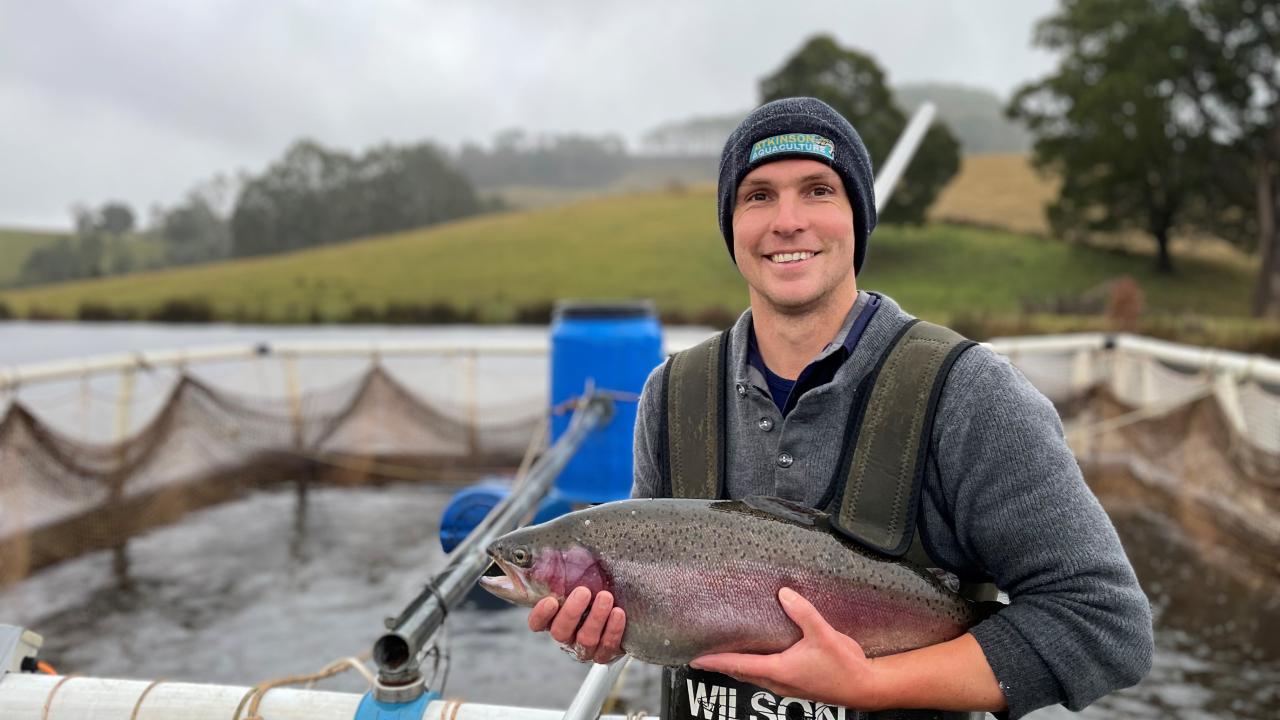
Among the lush, rolling hills of traditional cattle and cropping country at Riana in North-West Tasmania, a new trout venture is making a splash in a farmer’s dam.
One of the state’s last privately owned trout farms, Atkinson Aquaculture, has begun a pilot study that could see it grow out its trout to huge proportions for filleting, adding to the initial purpose to supply plate-sized whole trout to supermarkets and fish shops.
The idea is to utilise dams on farms that are used irrigate crops and pasture, providing another income stream for the property owner and also provide nutrient-rich fertiliser for the soil.
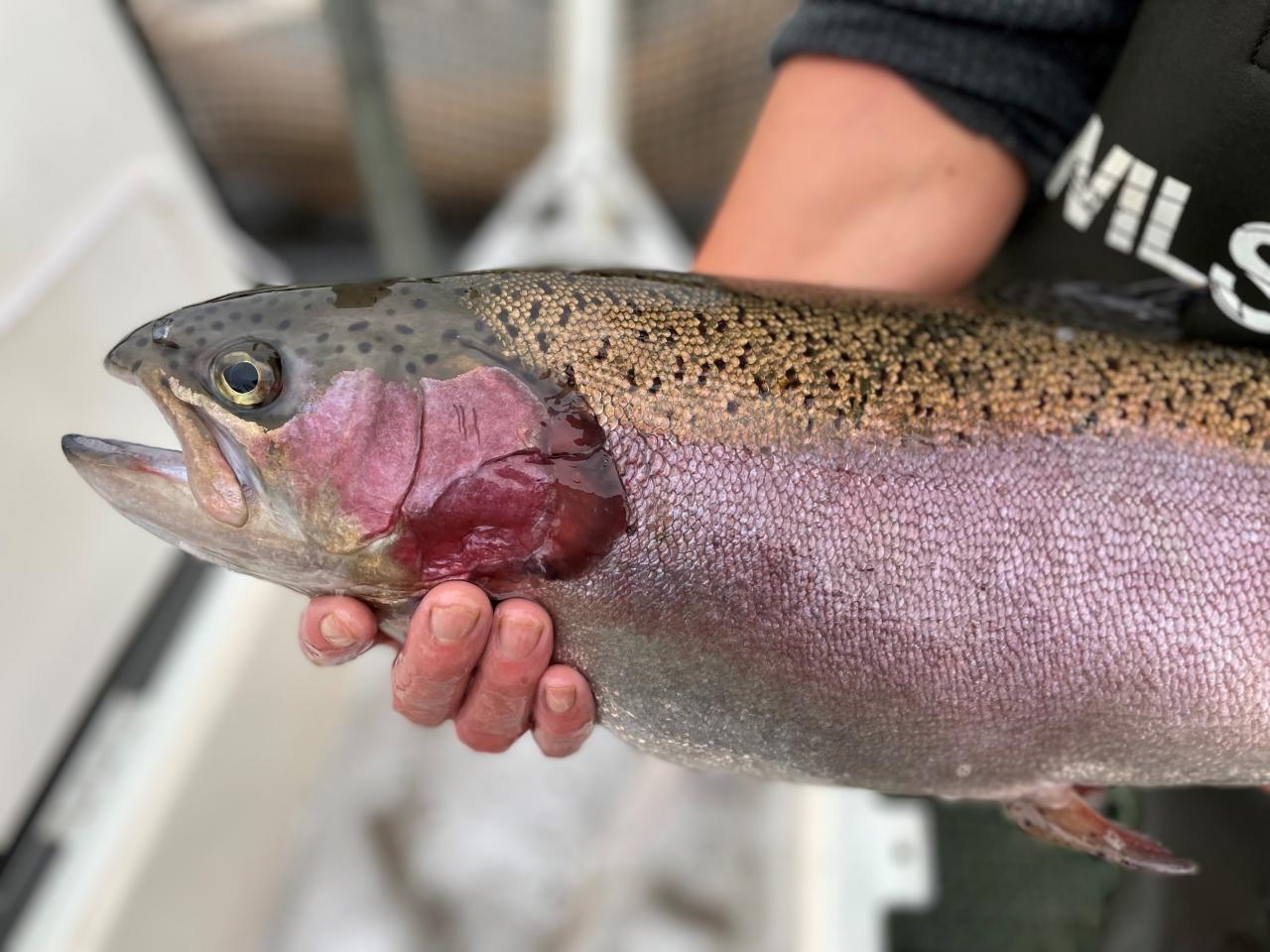
If water supply is compromised due to dry conditions the trout can be harvested early, or if the farmer doesn’t want the fish for any reason, it’s a relatively simple procedure to pack up and move the operation to another dam.
So far the trial is exceeding expectations in terms of fish growth, particularly through summer, and the farmers who have become involved are interested in utilising the fish effluent on their pasture..
The trout are being harvested between three and five kilograms in size every Monday and quickly transported to the various fresh fish markets.
Business owner Leigh Atkinson supplies trout to Mures and The Dock in Hobart, Kyeema in Launceston, Peter and Una Seafoods at Devonport and The Octopus in Burnie.
He also stocks junior angling ponds and private dams as required and is one of the last remaining trout farms in the state.
Leigh was not able to supply his main customer, Woolworths, for a period of 18 months when its fish distributor closed down, leaving him with too many fish and not enough market for a period of time.
It was an obvious time to try something new.
“You hear people complain about the salmon industry and call for land-based fish farming quite a lot and it is a real surprise to run up against several government departments trying to stop you,” Leigh said.
“It is only due to the in-principle agreement from both Inland Fisheries directors that this proceeded. Part of the conditions are that I have to do water sampling every month, including algae monitoring.”
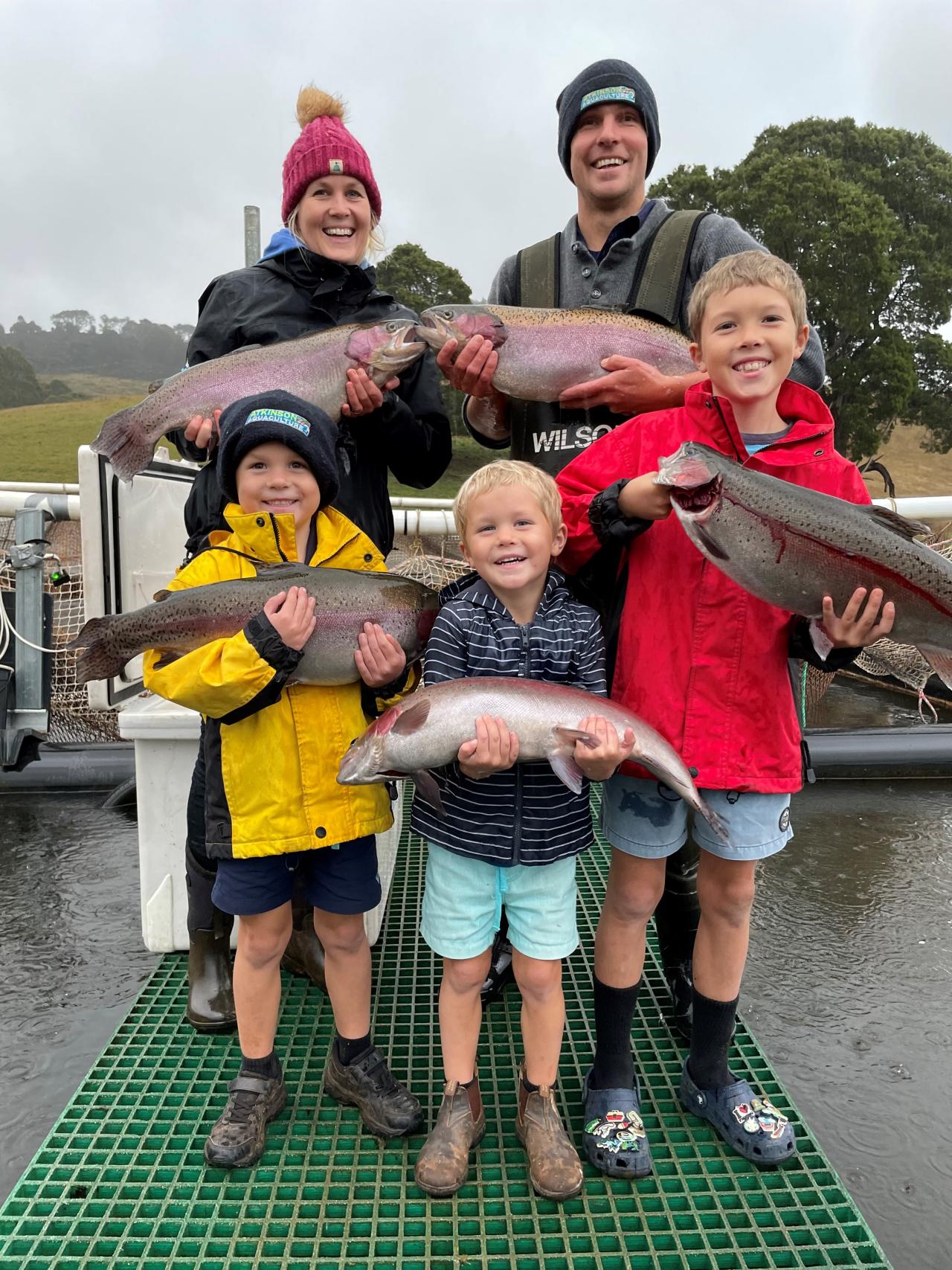
Leigh runs the fish hatchery on their family property in Natone, hatching the rainbow trout in an indoor recirculation system and growing them out to a plate-sized product of about 450g.
Leigh’s parents have run a private fishery called Natone Hills Fishery for 23 years which has proved to be the ideal place to move any excess fish.
“Mel and I went to the World Aquaculture Conference in Darwin two years ago and was talking to a few people there, including a company called Aquna who was already doing something similar to us with Murray Cod – growing them out in farm dams in cages, and then branching out into specifically designed dams,” he said.
“We decided we could also follow this path but it could be a bit risky.
“Their land based industry has been going really well as they have been able to provide an amazing product and were continually improving efficiency making Murray cod affordable.
When Leigh started asking local farmers if they would be interested in having trout in a cage in their dam, positioned directly over the irrigation inlet so that the fish effluent went straight to the paddocks, the response was positive.
“The beauty of it is that the two outputs from aquaculture, water and nutrients, are the two main inputs for agriculture.
“Victoria has a $50 million rainbow trout industry, NSW has a $100 million freshwater fish industry with silver perch, trout and Murray cod – while Tasmania has next to nothing.”
“We all knew it made sense, but once again we needed government approval.
“Under the regulations if you produce less than five tonne annually you should be allowed to grow the fish, so we designed and built the cages and nets, built up a business plan and a biosecurity plan, met with Inland Fisheries, NRE and the EPA and applied for the licence.”
Leigh was met with a hard no with no means of appeal.
The reason given was because it was classed as a ‘flow-through’, because dams naturally spill into creeks and no more flow-through licences were being issued.
It didn’t take into consideration that the water and nutrients were being recycled onto farm paddocks nor the environmental and sustainable benefits.
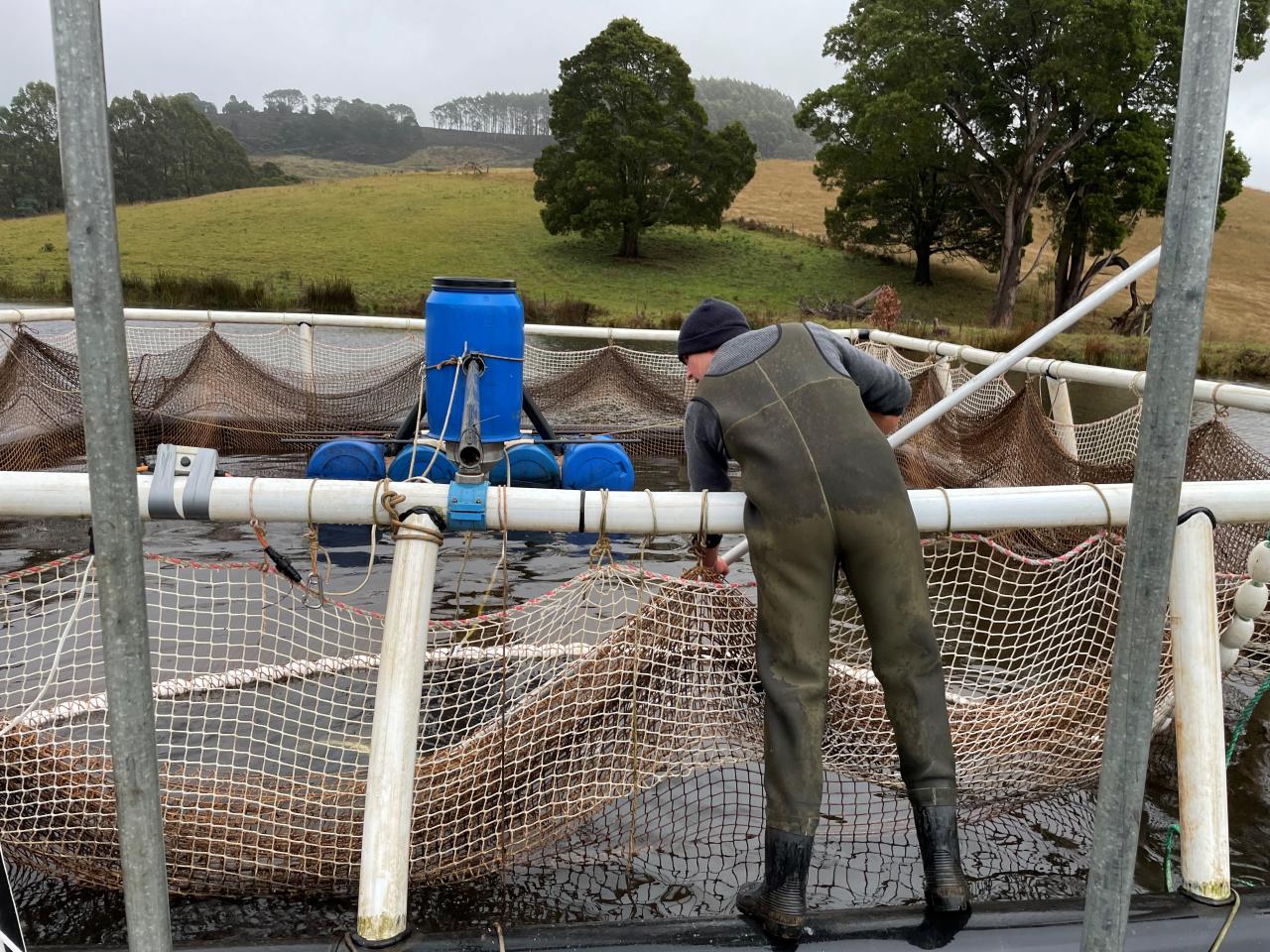
“We would be growing fish with no impact on the marine environment, and no disease or predation,” Leigh said.
“This would also be done in a food production area and actually make the food production area more productive and diverse.”
“I was directed to contact former Inland Fisheries director John Diggle and he reluctantly agreed in principle to the pilot study.”
On January 8, 18 months after Leigh started the process, he was given the go-ahead to start the study and now that it’s halfway through he’s looking forward to proving that he can create a land-based, highly sustainable fresh water trout industry that is a win-win for everyone.
“I cannot think of a more sustainable way to grow fish - the dams and irrigation infrastructure are already there and probably the best thing is you have access to farmers who are amazing people in terms of competency in many fields and they have a can-do attitude
Leigh’s rainbow trout are triploids that are incapable of breeding even if they somehow breached the dam wall.
The trial so far is achieving similar growth in the dams to what ocean trout achieve in saltwater during summer, putting on 10 to 15g in weight per day.
The fish are harvested once a week by catching them with a net, anaesthetising with a harvest anaesthetic such as Sed8 derived from natural clove oil, so that the biggest can be selected and smaller fish thrown back in to the water to grow on.
Leigh times his run to feed the fish when he does the school pickup so it can be supervised and optimised.
“This model could be replicated all over Tasmania in good farm dams,” Leigh said.
“With a possible lease agreement in place it could become a steady income stream and diversification of income for farmers – supply will never meet demand for the product as the ocean trout industry was already undersupplied before Huon stopped growing them.
“We would like the farmer to continue to irrigate as per usual and if we get a really dry year or an unfortunate circumstance and the dam needs to be fully utilised we would simply harvest the fish at a smaller size.
“One thing that I would like to say is the value of having good people around you. This could never have been a reality without some really good farmers and friends especially Rob Churchill with his expertise in making cages among many other things.”
The pilot study will be assessed in January upon completion.
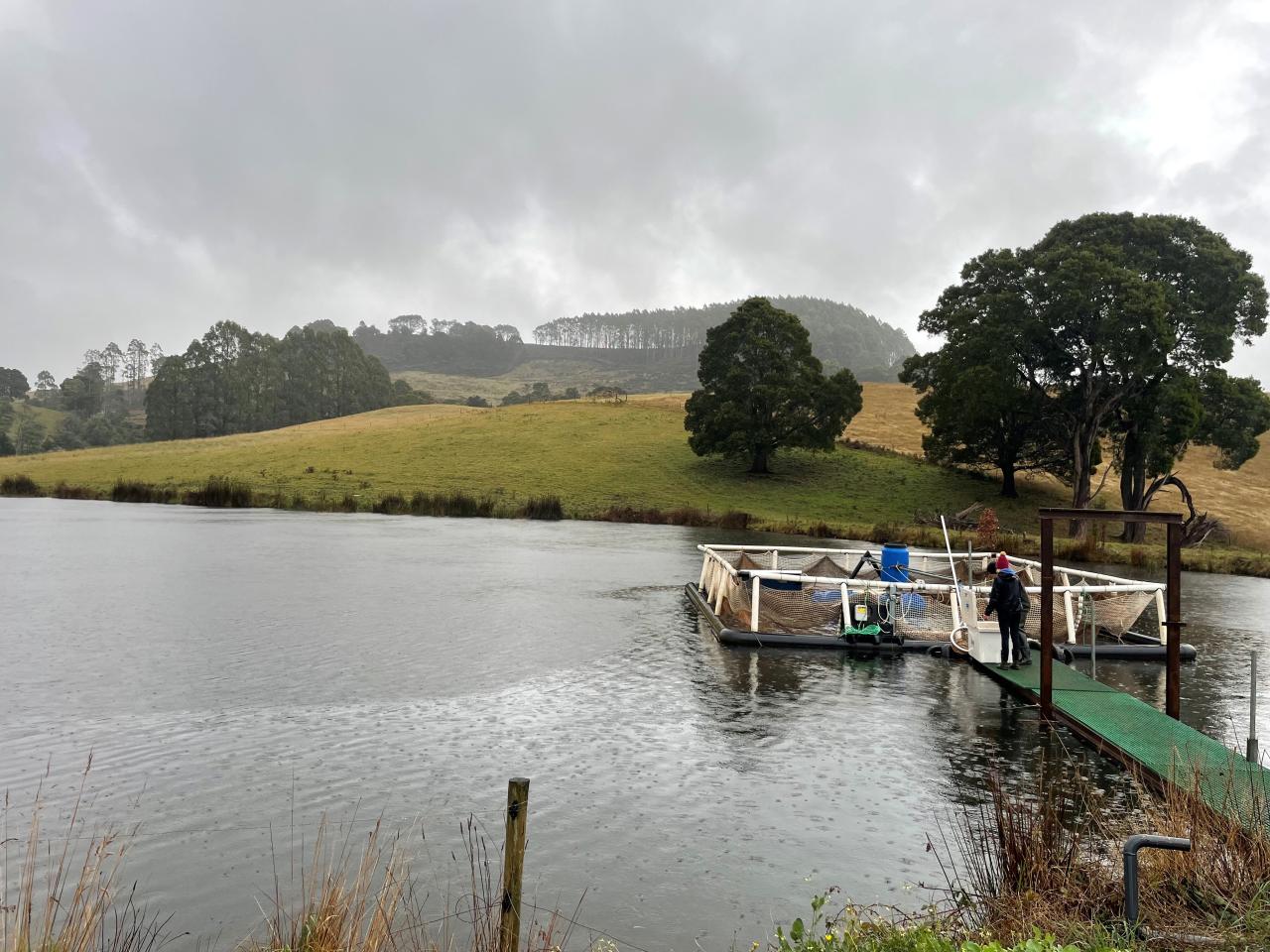

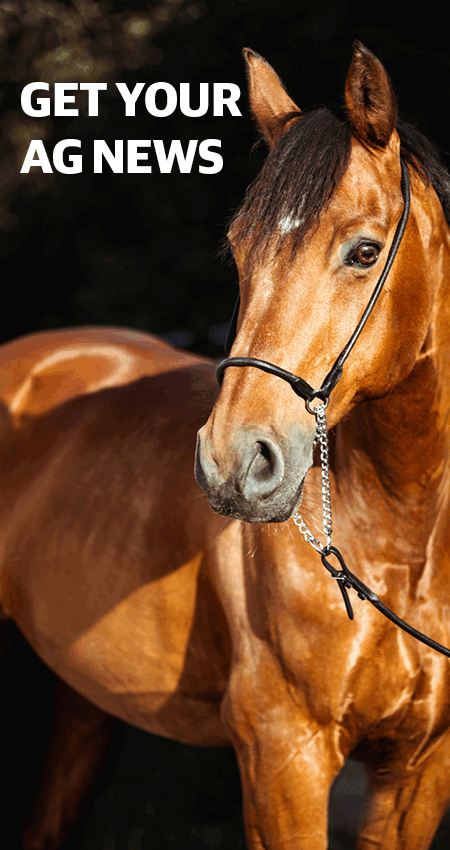
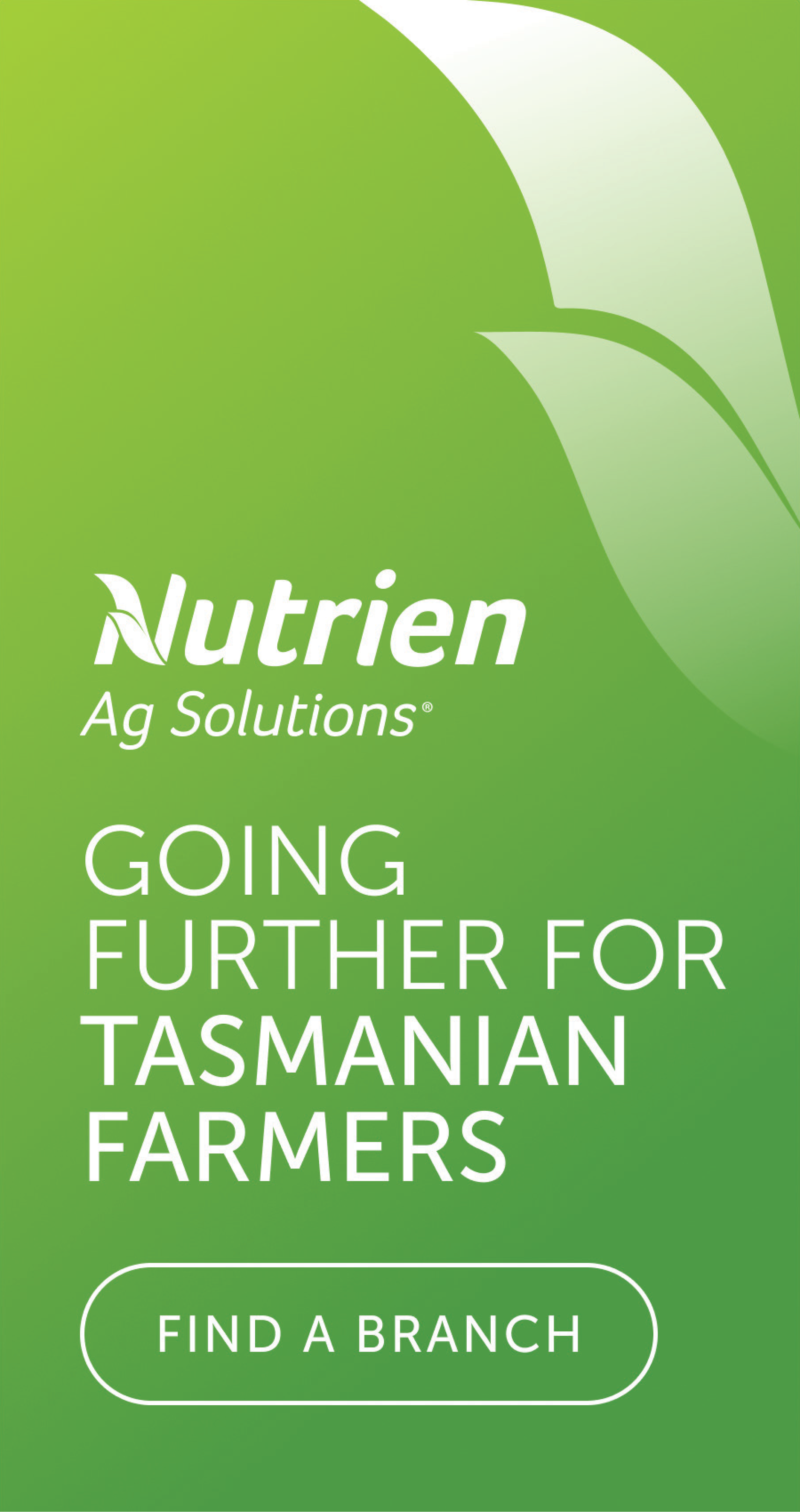

Add new comment